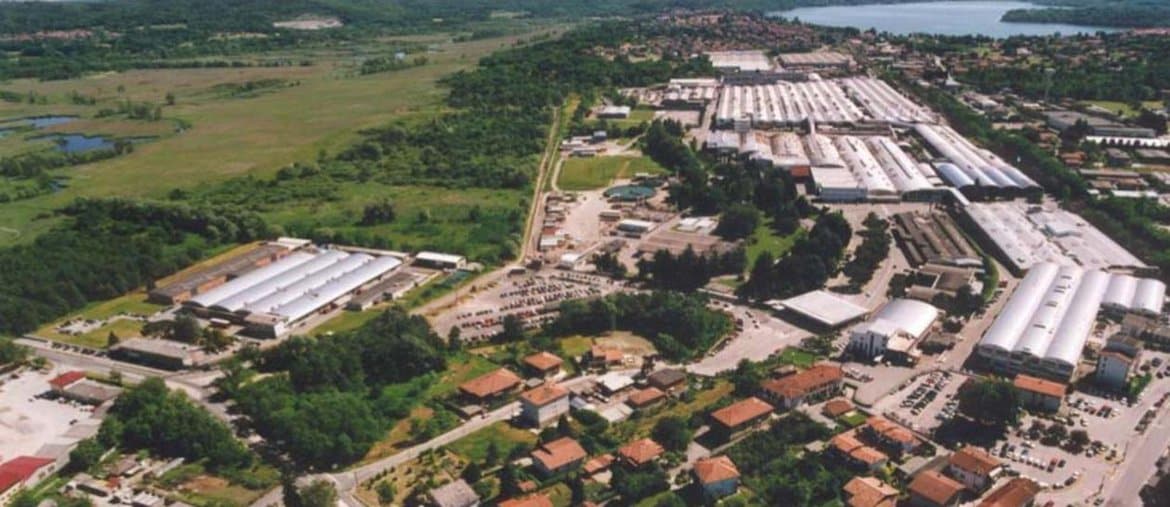As soon as we enter the Cooking Performance laboratory, the warmth and aromas typical of a kitchen envelop us. Around us, some young people in white coats are busy at the stove or intent on checking ovens, microwave ovens and hobs. Yet we are not in a restaurant and the kids around us are not cooks, but food technologists. They are part of the team of about 250 experts who work in the Cassinetta di Biandronno Research and Development Center, in the province of Varese, where the American appliance giant Whirlpool has its largest Italian industrial center, as well as the first detected in our country, in 1989, where the Ignis founded by Giovanni Borghi once stood.
The city of household appliances
The Cassinetta site is a small home appliance city, explains Manuel Rossi, director of the Lombard site and manager of Whirlpool’s Italian plants: 1.2 million square meters, where about 2,500 people work. In addition to the three factories (which occupy 250 thousand square meters and produce refrigerators, ovens and microwaves), it houses the laboratories and some of the company’s suppliers. Rossi recalls the central role of Cassinetta and Lombardy in Whirlpool’s industrial galaxy, which globally generated 19.4 billion dollars in 2020, with 78 thousand employees in 57 production sites. The headquarters of the EMEA area (Europe, Middle East and Africa) has been based in Pero, near Milan, since 2017 (previously it was in Comerio), while the Cassinetta R&D center is one of the main ones of the group on a global level.
Loading…
The Research and Development Center
This is where household appliances and functions are developed, which are then manufactured not only here, but also in the other plants of the group in Italy, Europe or the rest of the world, explains Massimo Leonardi, head of the development platforms for kitchen products. «The group is organized on a global level in order to enhance the specific skills of the research centers – explains Leonardi -. Cassinetta is the global heart of Whirlpool for Cooking, but here we also do research for refrigeration appliances, we have technological development laboratories, one for the Internet of Things and one for product design. We work in synergy with the Benton Harbor laboratories, the headquarters in the United States, and the others located in China and India ».
Cassinetta, which produces about 1.7 million built-in products every year, is a bit of the spearhead of Whirlpool in Italy, where the multinational generates assets for about 1 billion euros in value, with 4 million pieces produced each year, it employs over 5,000 people and has 2,000 suppliers. After the closure of the Naples plant, which produced washing machines free standing and where 350 employees worked, there are now four production sites: in addition to Varese, the Marche factories of Melano (hobs) and Fabriano (offices, call centers and washing research) and that of Siena, specialized in freezers.
The year of Covid
In line with the trend of the household appliance industry in Italy, which last year recorded significant growth in sales and revenues, Whirlpool also grew, gaining market share. Cassinetta in particular, from June onwards, recorded production peaks which led to the hiring of about 600 people (of which a part should be permanently integrated, in case of stabilization also of the demand). “The positive trend is continuing – says Rossi – and should be confirmed at least for the first part of the year”. It was not easy, at the beginning, to keep up with the pace of demand: there were also, and still are, difficulties in the procurement of raw materials, especially steel. “But in a few months we managed to reorganize the lines, even doubling production in a few moments,” says Rossi. This is also due to the industrial model of World Class Manufacturing adopted in the three Cassinetta plants, which makes it possible to optimize production by minimizing waste, accidents and inefficiencies.
